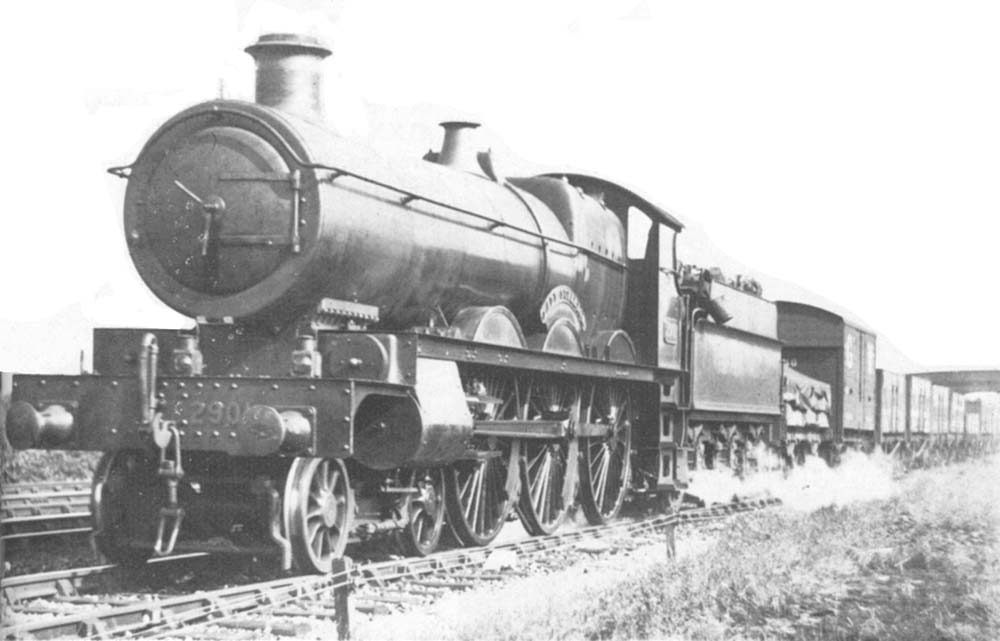 |
|
GWR Route: Banbury to Wolverhampton
Knowle & Dorridge Station: gwrkd1626
 |
GWR 4-6-0 Saint class No 2901 'Lady Superior' is seen
working a freight service near Knowle & Dorridge in August 1913. Built at
Swindon Works in May 1906, No 2901 remained in service until April 1933 when it
was withdrawn from CDF Cardiff Canton shed to be scrapped by Swindon works. The
last survivor of the Saint class, No 2920 'Saint David' was withdrawn from 85C
Hereford shed in October 1953. Churchward built and tested three prototype
locomotives with detail differences, between 1902 and 1905, before using the
third as the basis for the production series. The Saint class appeared in four
production series built between 1905 and 1913, each of which differed in
dimensions. There were also differences between members of each series in terms
of the boilers used, wheel arrangement, and arrangements for superheating.
Different series and individual locomotives within series were also fitted with
different tenders ranging from 3,500 imperial gallons to 4,000 imperial gallons
capacity.
The first of these was number 100 and it was completely
different to what the Great Western had produced before. Built to his ideas on
standardisation of design, GJ Churchward created a large response for its
completely modern look, but few people realised the great developments that it
would bring about. It was originally built with a parallel boiler, then with a
half-cone boiler in 1903 and later the first superheated half-cone boiler in
1910. The locomotive was said to have an American look about her and it was
true that Churchward had investigated American designs on boilers, but for
efficiency in the design of the motion, it was to the continent that he turned.
To this end, a locomotive was ordered from the Société Alsacienne
for the De Glehn 4-4-2 compound engine so that Churchward could compare the
design with his own.
The second prototype was engine number 98. Built with a
half-cone boiler as standard, the difference between the earlier locomotive was
in the valve gear layout and cylinder design, and in addition, the valve
diameter had grown from 6½ inches to 10 inches. The second batch, the
'Saints' with numbers 2911 to 2930. These had the curved frames at the front
and rear of the locomotive, and soon afterwards the initial batch of ten
'Ladies' together with most of the prototypes, numbers 2971 to 2998, except for
numbers 2900 / 1 / 4 / 7 / 9 / 10 / 71 / 73 / 74 / 75 / 76 / 77 / 78 and
98.
The third and last prototype was number 171 which was
initially built as a 4-6-0 but in October 1904 it was converted to a 4-4-2 to
enable better comparison with the performance of the De Glehn compound; it was
reconverted to 4-6-0 in July 1907. The third prototype's main contrast with
previous prototype engines was a working pressure of 225 lbs. While the trials
between the two locomotives were taking place, a further nineteen locomotives
were ordered similar to the design of 171 except that thirteen were built as
4-4-2s while the remaining six were built as 4-6-0s, until a decision was made
on the best wheel arrangement for the Great Western's lines.
Robert Ferris
 back back

|
